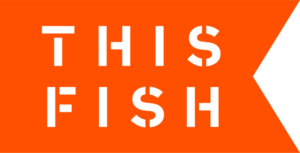Support
Frequently Asked Questions
Get started with the most common questions about Tally.
Tally can do a lot for your business and we know you may have many questions about its functionality, how it integrates and how to set it up. This FAQ will help you get on the way.
If you have more questions, or feedback, for us, please reach out through our form.
General info
Yes. Customization is one of Tally’s main advantages. Our software can easily be configured for all types of workflows such as vessel unloading, inventory, production, quality control and much more. Each processing plant is unique and we can configure Tally to meet your needs.
We’ve successfully implemented Tally in processing plants for cooked crab, cooked and live lobster, live shellfish, canned tuna, sashimi, groundfish fillets, smoked salmon, brined roe, shrimp and many others.
Both. The seafood industry is unique since 80 percent of processing plants are small-to-medium scale. Our smallest customer uses Tally to only scan pallets in and out of a cold storage inventory. Our largest customer processes up to 240 metric tonnes of tuna each day, with over 200 workers using Tally daily, across all departments including production, quality control, inventory and logistics. Tally can also be operated in multiple processing plants, synchronizing and streaming data to central dashboards for headquarters.
Traceability is built into the core of the Tally software, enabling raw material lots to be traced directly to finished products. Tally enables you to split one raw material lot into multiple finished products or merge multiple raw material lots into one finished product.
Tally is used by the entire business from the shop-floor workers to senior executives. Workers typically enter and validate data in real-time whereas managers and supervisors monitor dashboards and run automated reports. Executives can assess business intelligence metrics such as yields and production levels.
Yes, Tally currently supports multiple languages in different alphabets such as Japanese, Thai or Burmese.
Yes, Tally can be configured so that email or text (SMS) notifications get sent when certain parameters are violated or triggered. Critical tracking events (CTEs) can also trigger a notification, such as an email sent to customers when an order is being processed or shipped.
Tally can manage inventories for raw material, packaging and finished product.We can also set you up with multiple inventories.
Tally also handles bulk inventories whereby total quantities are managed as a mass balance of inputs and outputs, or itemized inventories whereby each item, such as a box or pallet, is labelled with a unique QR code that is tightly tracked in the software.
Yes, Tally enables customers to print QR labels for packages, boxes and pallets. In fact, Tally has a built-in scanner which uses the camera on a mobile device for scanning. You can also integrate handheld scanners into Tally if needed.
Tally is a web app, which means it can run on any computer or mobile device (iOS or Android) with access to a web browser. We optimize Tally for the latest version of Google Chrome.
No. ERP software typically includes many modules for accounting, CRM, HR, sales, workforce management and other core business functions. Tally is categorized as a Manufacturing Execution System (MES) and focuses on digitizing and automating core manufacturing processes in real-time. It’s shop-floor software designed and built for managers, supervisors and workers in processing plants.
Yes, Tally can collect data from production processes that is necessary to determine the cost of goods sold (COGS). For example, Tally can collect the price of raw materials and yields to calculate the cost of raw materials in finished goods. It can also collect data on the bill of materials (BOM) and labour. This data can then be aggregated in a costing report for each production lot, work order or sales order.
Tally uses modern APIs (application programming interface) to integrate easily with other software. Some examples include Xero, Quickbooks, Salesforce and other warehouse management systems (WMS) or enterprise resource planning solutions (ERP). We also support integration into government reporting systems, such as SAFIS and Fishserve in the US and New Zealand respectively.
Tally can integrate with many types of hardware including label printers, scanners, weight scales and temperature gauges.
No. Tally is designed to be integrated with most off-the-shelf hardware by recognised brands such as Apple, Samsung, Huawei, Sony, Honeywell and others. If there’s digital output, Tally can pull the data from the device. We provide a list of recommended hardware which can be bought from local distributors and online retailers.
Our mission is to provide our customers with the most advanced seafood traceability and manufacturing software on the market. We typically implement several minor and one major feature upgrade each quarter.
We also have a quarterly product newsletter, Tally-Up, which you’ll be enrolled on as an active customer.
Annual SaaS (software-as-a-service) fees are charged for using Tally. The SaaS fee is calculated based on the number of production and quality control data entry forms and other features such as notifications, BI tools, inventories and more. Contact us for enterprise pricing.
The annual software fee includes unlimited users, unlimited dashboards, unlimited reports, integrations, secure data back-ups in the cloud, regular software upgrades and technical support throughout the year.
Data, privacy and security
Tally’s default setting uses the voluntary data standards of the Global Dialogue for Seafood Traceability (GDST).
In fact, ThisFish Inc. was one of the companies to provide technical advice and pilot the GDST standard. Tally also uses data standards from the U.N.’s Food & Agriculture Organization for species names, port locations, and fishing and farming methods.
Tally also uses data from the International Maritime Organization (IMO) and International Sustainable Seafood Foundation (ISSF) Proactive Vessel Registry for accurate vessel registry data.
Yes, Tally is designed to help improve compliance to HACCP, QMP and food safety standards as well as chain-of-custody certifications such as the Marine Stewardship Council (MSC), Aquaculture Stewardship Council (ASC), BRC, Halal, Kosher, among others.
Customers own their own data, and no data is shared unless a customer requests that their Tally data is shared with a third party such as a vendor, customer, certifier or government agency.
Tally can be set up with specific permissions for users depending on their role. For example, a worker may be limited to see only one data collection form whereas their supervisor may be able to view all the data entry forms for their department along with dashboards and reports.
All data entries are tracked back to a specific user and includes a timestamp when the entry is made in the software. Supervisors and managers can also review reports in Tally and verify the report, which includes a timestamp and their username. The report is then archived.
Mistakes do happen and so Tally includes a feature to enable workers or supervisors to edit or delete data. However, each edit or deletion is recorded in a change log with the username and timestamp. User permissions can limit who can make edits or deletions.
Each data entry station or form includes a standard report. Supervisors can review these reports and edit the data if errors are spotted. The edits are recorded in a change log with the supervisor’s username and timestamp.
Privacy is a top concern, and every customer’s server and database is kept entirely separate from each other in secure environments. Tally’s security has been audited by an external 3rd party against OWASP’s testing guidelines and to meet CIS’s Google Cloud Platform Foundation Benchmark level 2.
Implementation
Both. However, we recommend a cloud-based implementation because cloud computing is more secure, is more powerful and is easier to maintain. Tally uses Google Cloud Platform (GCP), which is equivalent in security and performance as Amazon Web Services (AWS).
If high-speed, stable Internet is not available, then we recommend installing Tally on a server on premise. We also install Tally on a second “hot” or live back-up server so if the primary server fails Tally will automatically switch over to the secondary server.
We also recommend hourly back-ups of data to cloud storage for increased security. Tally has been installed in remote locations such as the Aleutian and South Pacific Islands.
Depending on the size and complexity of the installation, the total time from contract signing to successful implementation can range from three to nine months.
For small- and medium-sized operations, Tally can be implemented remotely without the need for on-site technical staff. Tally was implemented remotely during the pandemic in several facilities around the world. However, we recommend having our technical staff onsite since it speeds up implementation and improves employee engagement and training.
Implementation has four steps. First, we do requirements gathering to understand your business objectives, workflows and feature requirements. Second, we’ll prototype the Tally configuration and test it with the customer remotely through a secure, private online portal. Third, we’ll do the onsite or remote installation, connecting hardware, training staff and finetuning the software. Fourth, for 4 to 6 weeks after the installation, we’ll work with customers to optimize Tally making small adjustments to the configuration based on user feedback.
Very little training is required by users. Tally has been designed for low-skilled workers. It has an intuitive interface with large buttons and simplified screens. Typically, a worker only uses one or two data-entry screens and can become proficient in an hour or two. Supervisors and managers need more training since they will become the trainers of the workers, and typically use multiple data-entry forms, dashboards and reports.
Yes, we recommend to breakdown large, complex installations into specific phases and rollout the software in a staged approach. For example, a customer may choose to first implement Tally in its core production processes with a second phase focused on quality control.
Support
We currently offer support in English, Spanish, Portuguese, Tagalog and Thai.
We operate a customer support portal that includes a knowledge base, FAQs and ticketing system to report incidents or request changes, upgrades or new features in Tally.
Customers may also use video conferencing (Google Meets or Zoom) or the telephone to interact with support engineers.
ThisFish has technical support engineers in four time zones in South East Asia and the Americas and so can offer almost 24-hour support, 7 days per week in these regions.
There is no limit to fixing bugs or other performance issues that arise in the software. We are committed to ensuring the software runs smoothly.
However, we limit the number of support hours each year for making changes or additions to the software configuration.
Additional support hours can be purchased if customers need to make major changes to the software when factory processes are improved or expanded.
Super easy. A core advantage of Tally is a configuration layer in the software which enables quick changes without the need to rewrite the base code or upgrade the software.
Customers can make some changes to the software such as adding or deleting users or changing buttons and dropdown menus on screens. Adding or deleting new data fields or making changes to workflows will require the help of a technical support engineer.



